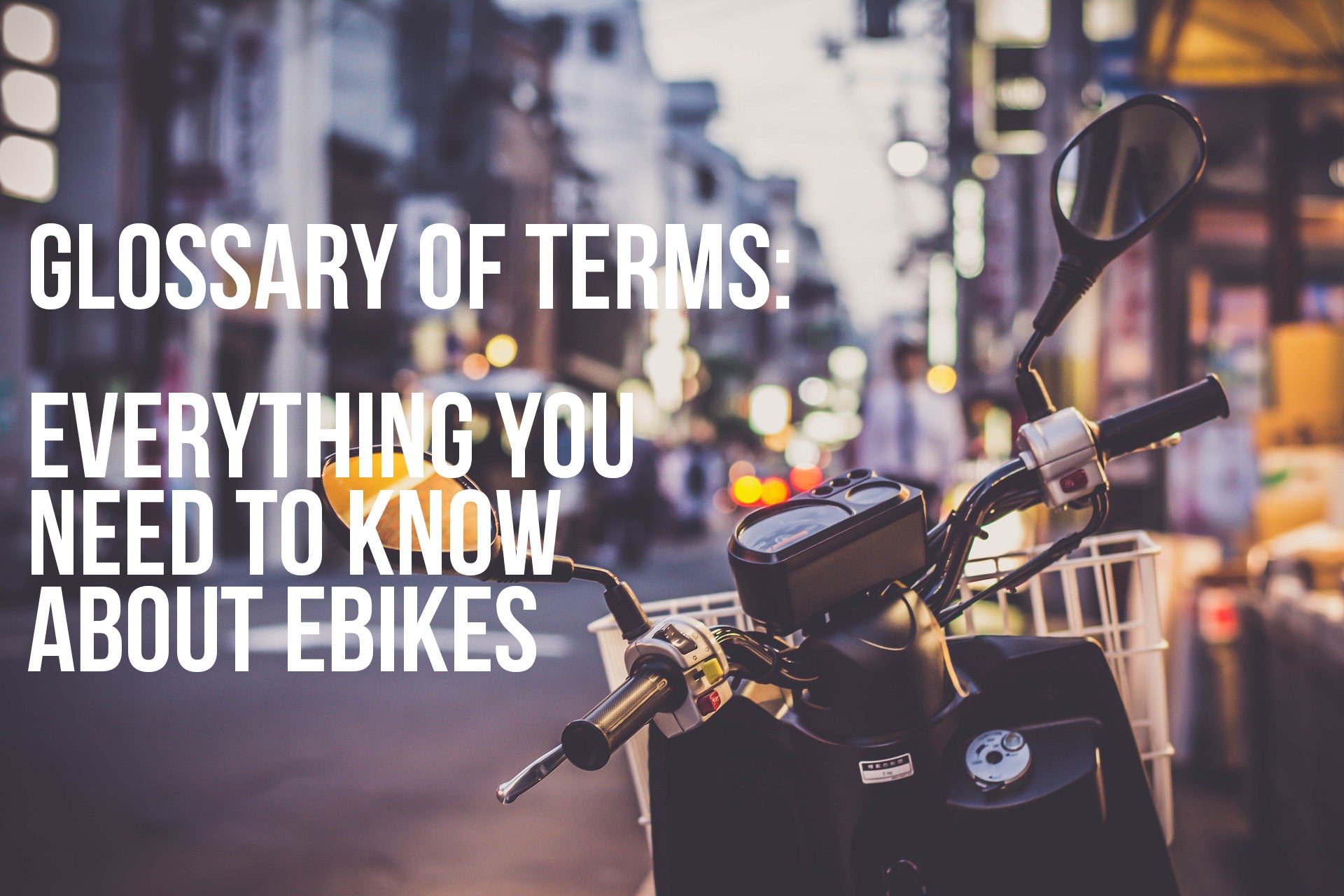
Glossary of Terms: Everything you need to know about Ebikes
| Akili Sylvester
Light Electric Vehicles are gaining popularity for a bunch of reasons: they are efficient, economical and eco-friendly. They provide comfortable travel and independence, and are good for commuters, sports enthusiasts, distance cyclists, those seeking additional mobility options and many more.
With the wide variety of users, and such rapid development in the industry, it can be difficult to follow all the terminology in the industry. That’s why we’re here to help you learn all the ins and outs of Light electric Vehicles.
Today we’re going through just a few of the common terms you’d probably heard as you’ve found out more about riding electric. Let’s jump right in.
Range /rānj/
This is a common term that is used to describe the distance your vehicle will be able to travel autonomously before it needs a charge. It’s important to note that if you are riding an Ebike or scooter, you will be able to physically pedal the machine- this muscle power will ease the energy pull from the battery and increase your range.
WH - Watt Hour /ˈwädˌou(ə)r/
WH stands for Watt Hour - this is a universal storage battery rating system. In short this is a quick and easy power rating of the battery. With the formula being:
Watt Hours (WH) = Voltage (V) x Amp Hours (AH)
Many companies boast higher voltages in lieu of smaller amp hours or vice versa making it easier to fool the laymen that one battery is more powerful than the next when it isn’t.
Watt Hours takes out that discrepancy and gives one concrete answer.
The higher the Watt Hours, the more powerful the battery.
PAS (PEDAL ASSIST) /ˈpedl əˈsist/
PAS refers to Pedal Assist. Pedal Assist is a system of allocating a portion of the power from the motor to supplement the amount of energy you use to pedal.
In a short concise definition, the motor will give a little to a lot of power depending on the setting to make it easier to ride.
Pedal Assist, can range from just an on and off switch, to always on and sometimes 3 - 5 levels of pedal assist. The lower the level of pedal assist, the more of a work out you will get and the higher the level the more power is drawn from the motor!
SLA (SEALED LEAD ACID) BATTERY /ˈsē(ə)l'd lēd asəd 'badərē/
SLA stands for Sealed Lead Acid , it refers to a type of battery that relies on the chemical reaction between Lead-alloy plates and fibreglass spacers that have filled with an acidic chemical compound. The result is a hefty, powerful battery that is one of the most economical on the market to date.

CONTROLLER /kənˈtrōlər/
The controller is the brain of the bike. Consider a small computer that helps understand how fast your bike is going, or what riding preferences you have and communicates this info to the motor to act as such.
THUMB THROTTLE /THəmˈTHrädl/
This is a speed control that exists on the handle bars, and is designed to be easily moved ergonomically with your thumb. Ebikes with thumb throttles allow the rider to engage the motor without pedaling or “Autonomously”

TWIST THROTTLE /twistˈTHrädl/
A twist throttle is a speed controller that controls the speed with a twisting motion. These throttles are pressure sensitive, meaning the more you twist the more power is given.

AUTONOMOUS /ôˈtänəməs/
You will often hear about the range of a bike being referred to with an autonomous distance. This means that the estimated range is that of the unit without adding any pedal power. Because it is difficult to gauge how much one person pedals vs the next, we measure range against its autonomous distance.
This is why you might see bikes with similar specs offering higher ranges as they are assuming you are going to pedal and use any underperformance based on the rider.

TORQUE /tôrk/
Torque refers to the output from the motor that causes the rotations of the wheels within your bike. Essentially torque means power.
LITHIUM ION BATTERY /ˈliTHēəm ˈīən,ˈīˌänb 'badərē/
Lithium Ion batteries are known for being lighter and for having a longer lifespan, capable of holding up to 1,000 full cycles. They come at a higher price-point, but given their longevity, their additional upfront cost pays for itself.

BATTERY /ˈbadərē/
Your electric vehicle has a rechargeable battery that needs to be maintained regularly throughout the life of your device. Common batteries you will find in Electric Vehicles are Lead Acid batteries and Lithium Ion batteries.
It’s important to note that even a fully charged battery will lose power slowly, even when not running. It’s a good general rule to check your device's power level intermittently if it hasn’t been run in a while.
VOLTAGE /ˈvōltij/
Voltage in short is the out right power that the battery has. Often composed in increments of 12, this number will directly impact acceleration, and climbing incline.
AMPERAGE /ˈamp(ə)rij/
Amperage in short is the sustainability of the battery. This is either represented in Amp Hours (AH) or mAH (milliamp hours). This number primary impacts the range of the battery.

We have really only scratched the surface on the terminology for your electric vehicle. Are there some terms you’d like us to explain? Drop them in the comments below and we will add as many of them as we can to our next glossary posts.

Leave a comment
Your email address will not be published.